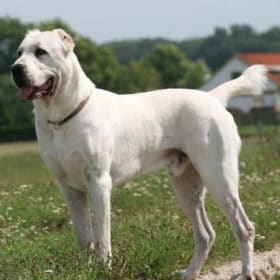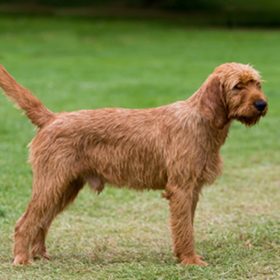Portuguese Sheepdog

Pets don’t like to bark much but are still very wary of strangers. About other animals, including dogs, it shows itself consciously and never barks for no reason, does not compete, perfectly divides the territory. The Portuguese Sheepdog is very loyal to its owner, well-trained, and easy to get along with all family members.
Table of Contents
Breed Information
| Another Name | Cão da Serra de Aires |
| Origin | Portugal |
| Height | Males 45-55 cm Females 42-52 cm |
| Weight | 17-27 kg |
| Fur | Very long and straight, it forms a mustache and beard on the muzzle |
| Color | Black with brown markings in various shades, yellow, brown, gray, red. Today, the most common color is black. All other colors are quite rare |
| Lifespan | 12-14 years |
| FCI Classification | Sheepdogs and Cattledogs (except Swiss Cattledogs) |
| Group | Service dogs |
| Price | $630-1300 |
Breed Photos
Origin History
The Portuguese Sheepdog comes from the plains of Portugal. There it helped shepherds with their flocks. It is probably a relative of the Catalan or Pyrenean Sheepdog. This guard dog was noted for its excellent herd protection qualities and unpretentious food. Therefore it was trendy in its homeland. It could withstand bad weather conditions and be used as a herding dog for sheep and cows, goats, and horses.
The Portuguese Sheepdog calmly made her rounds of the cattle and made sure everyone was nearby. And if animals got lost, she would drive them back into the herd with a loud bark. It earned recognition as a separate dog breed in 1996.
Appearance
The Portuguese Sheepdog is of medium size; males are taller than females; 45-55 cm tall, and females are 42-52 cm tall. The weight ranges from 17 to 27 kg.
The body of sheepdogs is long, bones healthy, and robust. The coat is relatively long and straight, without an undercoat. There are colors of reddish-black with brown markings in different shades, yellow, brown, gray, today more popular sheepdogs with black color; all other colors are quite rare. Also, white spots can be on the coat, but not very many.
Dogs have a large head and may have whiskers and beards on their muzzles because of their length. The paws of the Portuguese Sheepdog are robust and healthy, comfortable in the running. The nose of dogs with pronounced, well-defined nostrils.
Character
Pets don’t like to bark much but are still very wary of strangers.
About other animals, including dogs, it shows itself consciously and never barks for no reason, does not compete, perfectly divides the territory. The Portuguese Sheepdog is very loyal to its owner, well-trained, and easy to get along with all family members.
The Portuguese Sheepdog is very athletic and energetic, easy and comfortable to walk with; it is not capricious.
Warm and caring attitude towards children, ready to play with them and keep them safe. Non-conflict and intelligent, lively. In the world are considered one of the most intelligent breeds so that you will have a loyal protector and guardian for the home and a friend.
Care
The Portuguese Sheepdog can live both in an apartment and in a private home. It is enough to walk, jog, play with it actively, and live in an apartment can not bring any discomfort.
The fact that the Portuguese Sheepdog has no undercoat makes it easy to care for them. Once a week, it is recommended to brush their hair. When the dog moults, it should be done more often, about every 2-3 days.
It is necessary to keep the pet nice and groomed, so it is recommended to bathe and trim the claws systematically. Because of the long muzzle hair and hanging ears, the pet’s ears are peculiarly shaped and not well ventilated; it is necessary to wash them and maintain hygiene.
Training
To efficiently and without problems teach the Portuguese Sheepdog different commands, you need to have a strong and robust character and from childhood to show the pet who his master is. Because, like most members of the group of these dogs, they are very independent and have their hunting instincts.
Dogs have good instincts and don’t need much time to learn commands, but they can show their pride if you are not the authority figure for them. Your pet should be taught commands that will allow them to run around a lot and show off their physical attributes, as they are stable and hardy.
Common Diseases
Dogs of this breed are in good health, but you should have their ears checked regularly by your vet’s ENT. And also, try to make sure your dog doesn’t overheat in the sun.
Nutrition
It is essential not to give your dog too much food, making them lazy, which is not typical for the breed. You can feed food, but then you should not save money and choose a premium class. If you provide natural food, you should not give a lot of fish; it can provoke fatty kidneys.
 Cimarrón Uruguayo
Cimarrón Uruguayo Central Asian Shepherd Dog
Central Asian Shepherd Dog Griffon Fauve de Bretagne
Griffon Fauve de Bretagne Shar Pei
Shar Pei Portuguese Podengo
Portuguese Podengo Briard
Briard

